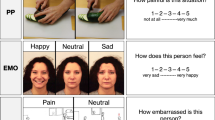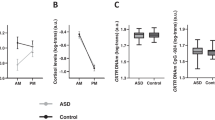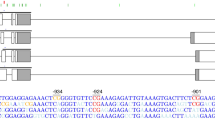Abstract
Social anxiety disorder (SAD) is a commonly occurring and highly disabling disorder. The neuropeptide oxytocin and its receptor (OXTR) have been implicated in social cognition and behavior. This study—for the first time applying a multilevel epigenetic approach—investigates the role of OXTR gene methylation in categorical, dimensional, and intermediate neuroendocrinological/neural network phenotypes of social anxiety. A total of 110 unmedicated patients with SAD and matched 110 controls were analyzed for OXTR methylation by direct sequencing of sodium bisulfite-converted DNA extracted from whole blood. Furthermore, OXTR methylation was investigated regarding SAD-related traits (Social Phobia Scale (SPS) and Social Interaction Anxiety Scale (SIAS)), salivary cortisol response during the Trier social stress test (TSST), and amygdala responsiveness to social phobia related verbal stimuli using fMRI. Significantly decreased OXTR methylation particularly at CpG Chr3: 8 809 437 was associated with (1) the categorical phenotype of SAD (p<0.001, Cohen’s d=0.535), (2) increased SPS and SIAS scores (p<0.001), (3) increased cortisol response to the TSST (p=0.02), and (4) increased amygdala responsiveness during social phobia-related word processing (right: pcorr<0.001; left: pcorr=0.005). Assuming that decreased OXTR methylation confers increased OXTR expression, the present finding may reflect a compensatory upregulation for pathologically reduced oxytocin levels or a causally relevant increased OXTR activation in SAD and related traits. OXTR methylation patterns might thus serve as peripheral surrogates of oxytocin tone and aid in establishing accessible biomarkers of SAD risk allowing for indicated preventive interventions and personalized treatment approaches targeting the oxytocin system.
Similar content being viewed by others
Log in or create a free account to read this content
Gain free access to this article, as well as selected content from this journal and more on nature.com
or
References
Alasaari J-S, Lagus M, Ollila H-M, Toivola A, Kivimaki M, Vahtera J et al (2012). Environmental stress affects DNA methylation of a CpG rich promoter region of serotonin transporter gene in a nurse cohort. PLoS One 7: e45813.
American Psychiatric Association (2013) Diagnostic and Statistical Manual of Mental Disorders In. American Psychiatric Publishing: Arlington, VA.
Baayen R, Piepenbrock R, Gulikers L (1995) The CELEX lexical database (Release 2). Linguistic Data Consortium, University of Pennsylvania: Pennsylvania, PA.
Bakermans-Kranenburg M-J, van Ijzendoorn M-H (2013). Sniffing around oxytocin: review and meta-analyses of trials in healthy and clinical groups with implications for pharmacotherapy. Transl Psychiatry 3: e258.
Bale TL, Davis AM, Auger AP, Dorsa DM, McCarthy MM (2001). CNS region-specific oxytocin receptor expression: importance in regulation of anxiety and sex behavior. J Neurosci 21: 2546–2552.
Dadds M-R, Moul C, Cauchi A, Dobson-Stone C, Hawes D-J, Brennan J et al (2014). Methylation of the oxytocin receptor gene and oxytocin blood levels in the development of psychopathy. Dev Psychopathol 26: 33–40.
Davies M-N, Volta M, Pidsley R, Lunnon K, Dixit A, Lovestone S et al (2012). Functional annotation of the human brain methylome identifies tissue-specific epigenetic variation across brain and blood. Genome Biol 13: R43.
Domes G, Heinrichs M, Glascher J, Buchel C, Braus D-F, Herpertz S-C (2007a). Oxytocin attenuates amygdala responses to emotional faces regardless of valence. Biol Psychiatry 62: 1187–1190.
Domes G, Heinrichs M, Michel A, Berger C, Herpertz S-C (2007b). Oxytocin improves “mind-reading” in humans. Biol Psychiatry 61: 731–733.
Domschke K, Stevens S, Beck B, Baffa A, Hohoff C, Deckert J et al (2009). Blushing propensity in social anxiety disorder: influence of serotonin transporter gene variation. J Neural Transm 116: 663–666.
Domschke K, Tidow N, Kuithan H, Schwarte K, Klauke B, Ambree O et al (2012). Monoamine oxidase A gene DNA hypomethylation - a risk factor for panic disorder? Int J Neuropsychopharmacol 15: 1217–1228.
Domschke K, Tidow N, Schrempf M, Schwarte K, Klauke B, Reif A et al (2013). Epigenetic signature of panic disorder: a role of glutamate decarboxylase 1 (GAD1) DNA hypomethylation? Prog Neuropsychopharmacol Biol Psychiatry 46: 189–196.
Domschke K, Tidow N, Schwarte K, Deckert J, Lesch KP, Arolt V et al (2014a). Serotonin transporter gene hypomethylation predicts impaired antidepressant treatment response. Int J Neuropsychopharmacol 17: 1167–1176.
Domschke K, Tidow N, Schwarte K, Ziegler C, Lesch KP, Deckert J et al (2014b). Pharmacoepigenetics of depression: no major influence of MAO-A DNA methylation on treatment response. J Neural Transm 122: 99–108.
Faul F, Erdfelder E, Lang AG, Buchne A (2007). G*Power 3: a flexible statistical power analysis program for the social, behavioral, and biomedical sciences. Behav Res Meth 39: 175–191.
Forman S-D, Cohen J-D, Fitzgerald M, Eddy W-F, Mintun M-A, Noll D-C (1995). Improved assessment of significant activation in functional magnetic resonance imaging (fMRI): use of a cluster-size threshold. Magn Reson Med 33: 636–647.
Gregory S-G, Connelly J-J, Towers A-J, Johnson J, Biscocho D, Markunas C-A et al (2009). Genomic and epigenetic evidence for oxytocin receptor deficiency in autism. BMC Med 7: 62–67.
Guastella A-J, Howard A-L, Dadds M-R, Mitchell P, Carson D-S (2009). A randomized controlled trial of intranasal oxytocin as an adjunct to exposure therapy for social anxiety disorder. Psychoneuroendocrinology 34: 917–923.
Guastella A-J, Mitchell P-B, Dadds M-R (2008). Oxytocin increases gaze to the eye region of human faces. Biol Psychiatry 63: 3–5.
Heinrichs M, Baumgartner T, Kirschbaum C, Ehlert U (2003). Social support and oxytocin interact to suppress cortisol and subjective responses to psychosocial stress. Biol Psychiatry 54: 1389–1398.
Hoge E-A, Lawson E-A, Metcalf C-A, Keshaviah A, Zak P-J, Pollack M-H et al (2012). Plasma oxytocin immunoreactive products and response to trust in patients with social anxiety disorder. Depress Anxiety 29: 924–930.
Hoge E-A, Pollack M-H, Kaufman R-E, Zak P-J, Simon N-M (2008). Oxytocin levels in social anxiety disorder. CNS Neurosci Ther 14: 165–170.
Jack A, Connelly J-J, Morris J-P (2012). DNA methylation of the oxytocin receptor gene predicts neural response to ambiguous social stimuli. Front Hum Neurosci 6: 1–7.
Jansen L-M, Gispen-de Wied C-C, Wiegant V-M, Westenberg H-G, Lahuis B-E, van Engeland H (2006). Autonomic and neuroendocrine responses to a psychosocial stressor in adults with autistic spectrum disorder. J Autism Dev Disord 36: 891–899.
Kirsch P, Esslinger C, Chen Q, Mier D, Lis S, Siddhanti S et al (2005). Oxytocin modulates neural circuitry for social cognition and fear in humans. J Neurosci 25: 11489–11493.
Kirschbaum C, Kudielka B-M, Gaab J, Schommer N-C, Hellhammer D-H (1999). Impact of gender, menstrual cycle phase, and oral contraceptives on the activity of the hypothalamus-pituitary-adrenal axis. Psychosom Med 61: 154–162.
Kirschbaum C, Pirke K-M, Hellhammer D-H (1993). The ‘Trier Social Stress Test'—a tool for investigating psychobiological stress responses in a laboratory setting. Neuropsychobiology 28: 76–81.
Kirschbaum C, Wüst S, Strasburger C-J (1992). 'Normal' cigarette smoking increases free cortisol in habitual smokers. Life Sci 50: 435–442.
Kissler J, Herbert C, Peyk P, Junghofer M (2007). Buzzwords: early cortical responses to emotional words during reading. Psychol Sci 18: 475–480.
Klengel T, Mehta D, Anacker C, Rex-Haffner M, Pruessner JC, Pariante CM et al (2013). Allele-specific FKBP5 DNA demethylation mediates gene-childhood trauma interactions. Nat Neurosci 16: 33–41.
Kudielka B-M, Hellhammer D-H, Kirschbaum C (2007). Ten years of research with the trier social stress test-revisited. In: Harmon-Jones E, Winkielman P, (eds) Social Neuroscience: Integrating Biological and Psychological Explanations of Social Behavior. Guilford Press: New York. pp 56–83.
Kumsta R, Heinrichs M (2013). Oxytocin, stress and social behavior: neurogenetics of the human oxytocin system. Curr Opin Neurobiol 23: 11–16.
Kumsta R, Hummel E, Chen F-S, Heinrichs M (2013). Epigenetic regulation of the oxytocin receptor gene: implications for behavioral neuroscience. Front Neurosci 7: 1–6.
Kusui C, Kimura T, Ogita K, Nakamura H, Matsumura Y, Koyama M et al (2001). DNA methylation of the human oxytocin receptor gene promoter regulates tissue-specific gene suppression. Biochem Biophys Res Commun 289: 681–686.
Labuschagne I, Phan K-L, Wood A, Angstadt M, Chua P, Heinrichs M et al (2010). Oxytocin attenuates amygdala reactivity to fear in generalized social anxiety disorder. Neuropsychopharmacology 35: 2403–2413.
Laeger I, Dobel C, Dannlowski U, Kugel H, Grotegerd D, Kissler J et al (2012). Amygdala responsiveness to emotional words is modulated by subclinical anxiety and depression. Behav Brain Res 233: 508–516.
Laeger I, Dobel C, Radenz B, Kugel H, Keuper K, Eden A et al (2014a). Of 'disgrace' and 'pain' – corticolimbic interaction patterns for disorder-relevant and emotional words in social phobia. PloS One 9: e109949.
Laeger I, Keuper K, Heitmann C, Kugel H, Dobel C, Eden A et al (2014b). Have we met before? Neural correlates of emotional learning in women with social phobia. J Psychiatry Neurosci 39: E14–E23.
Lewin J, Schmitt A-O, Adorjan P, Hildmann T, Piepenbrock C (2004). Quantitative DNA methylation analysis based on four-dye trace data from direct sequencing of PCR amplificates. Bioinformatics 20: 3005–3012.
Lischke A, Gamer M, Berger C, Grossmann A, Hauenstein K, Heinrichs M et al (2012). Oxytocin increases amygdala reactivity to threatening scenes in females. Psychoneuroendocrinology 37: 1431–1438.
Macdonald K, Feifel D (2014). Oxytocins role in anxiety: a critical appraisal. Brain Res 1580: 22–56.
Mamrut S, Harony H, Sood R, Shahar-Gold H, Gainer H, Shi YJ et al (2013). DNA methylation of specific CpG sites in the promoter region regulates the transcription of the mouse oxytocin receptor. PLoS One 8: e56869.
Marazziti D, Abelli M, Baroni S, Carpita B, Ramacciotti C-E, Dell'Osso L (2014). Neurobiological correlates of social anxiety disorder: an update. CNS Spectrums 26: 1–12.
Marazziti D, Dell'Osso B, Baroni S, Mungai F, Catena M, Rucci P et al (2006). A relationship between oxytocin and anxiety of romantic attachment. Clin Pract Epidemiol Ment Health 2: 2–28.
Meaburn EL, Schalkwyk LC, Mill J (2010). Allele-specific methylation in the human genome: implications for genetic studies of complex disease. Epigenetics 5: 578–582.
Meyer-Lindenberg A, Domes G, Kirsch P, Heinrichs M (2011). Oxytocin and vasopressin in the human brain: social neuropeptides for translational medicine. Nat Rev Neurosci 12: 524–538.
Miller R, Plessow F, Kirschbaum C, Stadler T (2013). Classification criteria for distinguishing cortisol responders from nonresponders to psychosocial stress: evaluation of salivary cortisol pulse detection in panel designs. Psychosom Med 75: 832–840.
Ohayon MM, Schatzberg AF (2010). Social phobia and depression: prevalence and comorbidity. J Psychosom Res 68: 235–243.
Parker K-J, Kenna H-A, Zeitzer J-M, Keller J, Blasey C-M, Amico J-A et al (2010). Preliminary evidence that plasma oxytocin levels are elevated in major depression. Psychiatry Res 178: 359–362.
Petrovic P, Kalisch R, Singer T, Dolan R-J (2008). Oxytocin attenuates affective evaluations of conditioned faces and amygdala activity. J Neurosci 28: 6607–6615.
Phan K-L, Fitzgerald D-A, Nathan P-J, Tancer M-E (2006). Association between amygdala hyperactivity to harsh faces and severity of social anxiety in generalized social phobia. Biol Psychiatry 59: 424–429.
Phaneuf S, Rodriguez L-B, TambyRaja R-L, MacKenzie I-Z, Lopez B-A (2000). Loss of myometrial oxytocin receptors during oxytocin-induced and oxytocin-augmented labour. J Reprod Fertil 120: 91–97.
Pierrehumbert B, Torrisi R, Laufer D, Halfon O, Ansermet F, Beck Popovic M (2010). Oxytocin response to an experimental psychosocial challenge in adults exposed to traumatic experiences during childhood or adolescence. Neuroscience 166: 168–177.
Provencal N, Suderman M-J, Guillemin C, Massart R, Ruggiero A, Wang D et al (2012). The signature of maternal rearing in the methylome in rhesus macaque prefrontal cortex and T cells. J Neurosci 32: 15626–15642.
Radke S, Roelofs K, de Bruijn E-R (2013). Acting on anger: social anxiety modulates approach-avoidance tendencies after oxytocin administration. Psychol Sci 24: 1573–1578.
Rodrigues S-M, Saslow L-R, Garcia N, John O-P, Keltner D (2009). Oxytocin receptor genetic variation relates to empathy and stress reactivity in humans. Proc Natl Acad Sci USA 106: 21437–21441.
Saphire-Bernstein S, Way B-M, Kim H-S, Sherman D-K, Taylor S-E (2011). Oxytocin receptor gene (OXTR) is related to psychological resources. Proc Natl Acad Sci USA 108: 15118–15122.
Schmidt S, Mohr A, Miltner W-H-R, Straube T (2010). Task-dependent neural correlates of the processing of verbal threat-related stimuli in social phobia. Biol Psychology 84: 304–312.
Stangier U, Heidenreich T, Berardi A, Golbs U, Hoyer J (1999). Die Erfassung Sozialer Phobie durch Social Interaction Anxiety Scale (SIAS) und die Social Phobia Scale (SPS). Zeitschrift für Klinische Psychologie 28: 28–36.
Stein M-B, Stein D-J (2008). Social anxiety disorder. Lancet 371: 1115–1125.
Stein MB, Tancer ME, Gelernter CS, Vittone BJ, Uhde TW (1990). Major depression in patients with social phobia. Am J Psychiatry 147: 637–639.
Stevens S, Gerlach A-L, Rist F (2008). Effects of alcohol on ratings of emotional facial expressions in social phobics. J Anxiety Disord 22: 940–948.
Tadic A, Müller-Engling L, Schlicht K-F, Kotsiari A, Dreimuller N, Kleimann A et al (2013). Methylation of the promoter of brain-derived neurotrophic factor exon IV and antidepressant response in major depression. Mol Psychiatry 19: 281–283.
Tzourio-Mazoyer N, Landeau B, Papathanassiou D, Crivello F, Etard O, Delcroix N et al (2002). Automated anatomical labeling of activations in SPM using a macroscopic anatomical parcellation of the MNI MRI single-subject brain. NeuroImage 15: 273–289.
Unternaehrer E, Luers P, Mill J, Dempster E, Meyer A-H, Staehli S et al (2012). Dynamic changes in DNA methylation of stress-associated genes (OXTR, BDNF ) after acute psychosocial stress. Transl Psychiatry 2: e150.
Ursini G, Bollati V, Fazio L, Porcelli A, Iacovelli L, Catalani A et al (2011). Stress-related methylation of the catechol-O-methyltransferase Val 158 allele predicts human prefrontal cognition and activity. J Neurosci 31: 6692–6698.
Uvnas-Moberg K, Bjokstrand E, Hillegaart V, Ahlenius S (1999). Oxytocin as a possible mediator of SSRI-induced antidepressant effects. Psychopharmacology (Berl) 142: 95–101.
Wittchen H-U (1997) SKID-I: Strukturiertes klinisches Interview für DSM-IV, Achse I: Psychische Störungen. Hogrefe: Goettingen.
Wittchen H-U, Pfister H (1997) DIA-X-Interviews: Manual für Screening-Verfahren und Interview; Interviewheft Längsschnittuntersuchung (DIA-X-Lifetime); Ergänzungsheft (DIA-X-Lifetime); Interviewheft Querschnittsuntersuchung (DIA-X-Monate); Ergänzungsheft (DIA-X-Monate); PC-Programm zur Durchführung des Interviews (Längs-und Querschnittsuntersuchung); Auswertungsprogramm. Swets and Zeitlinger: Frankfurt.
Wu S, Jia M, Ruan Y, Liu J, Guo Y, Shuang M et al (2005). Positive association of the oxytocin receptor gene (OXTR) with autism in the Chinese Han population. Biol Psychiatry 58: 74–77.
Young LJ (2013). When too much of a good thing is bad: chronic oxytocin, development, and social impairments. Biol Psychiatry 74: 160–161.
Acknowledgements
The present project was supported by the Deutsche Forschungsgemeinschaft (DFG), SFB-TRR-58, projects C02 (to KD, KPL, and JD), Z02 (to JD and AR) and A05 (to KPL), and FOR 2107, project WP1 (to UD), a grant by the Interdisziplinäres Zentrum für Klinische Forschung (IZKF), University of Muenster (Do3/021/10 to CD and PZ), and the European Community (AGGRESSOTYPE FP7/No. 602805 to AR and KPL). The contributions of JH and CK were supported by the Deutsche Forschungsgemeinschaft (DFG), grants HO 1900/6-1 to JH and KI 537/26-1 to CK. AR was supported by the Interdisziplinäres Zentrum für Klinische Forschung (IZKF), University of Wuerzburg (N-221). We gratefully acknowledge the skilful technical and intellectual support by Dr Nicola Tidow, Carola Gagel, and Kathrin Schwarte.
Author information
Authors and Affiliations
Corresponding author
Additional information
Supplementary Information accompanies the paper on the Neuropsychopharmacology website
Supplementary information
Rights and permissions
About this article
Cite this article
Ziegler, C., Dannlowski, U., Bräuer, D. et al. Oxytocin Receptor Gene Methylation: Converging Multilevel Evidence for a Role in Social Anxiety. Neuropsychopharmacol 40, 1528–1538 (2015). https://doi.org/10.1038/npp.2015.2
Received:
Revised:
Accepted:
Published:
Issue date:
DOI: https://doi.org/10.1038/npp.2015.2
This article is cited by
-
OXTR polymorphisms associated with severity and treatment responses of schizophrenia
Schizophrenia (2024)
-
A targeted long-read sequencing approach questions the association of OXTR methylation with high-functioning autism
Clinical Epigenetics (2023)
-
Detection, processing and reinforcement of social cues: regulation by the oxytocin system
Nature Reviews Neuroscience (2023)
-
Advances in human oxytocin measurement: challenges and proposed solutions
Molecular Psychiatry (2023)
-
Mild internet use is associated with epigenetic alterations of key neurotransmission genes in salivary DNA of young university students
Scientific Reports (2023)



